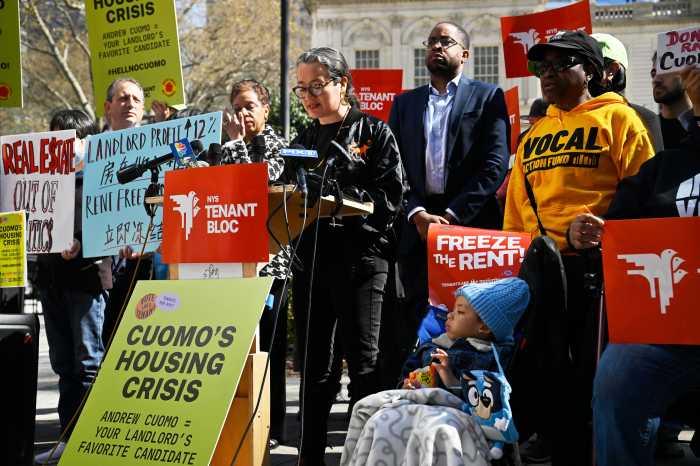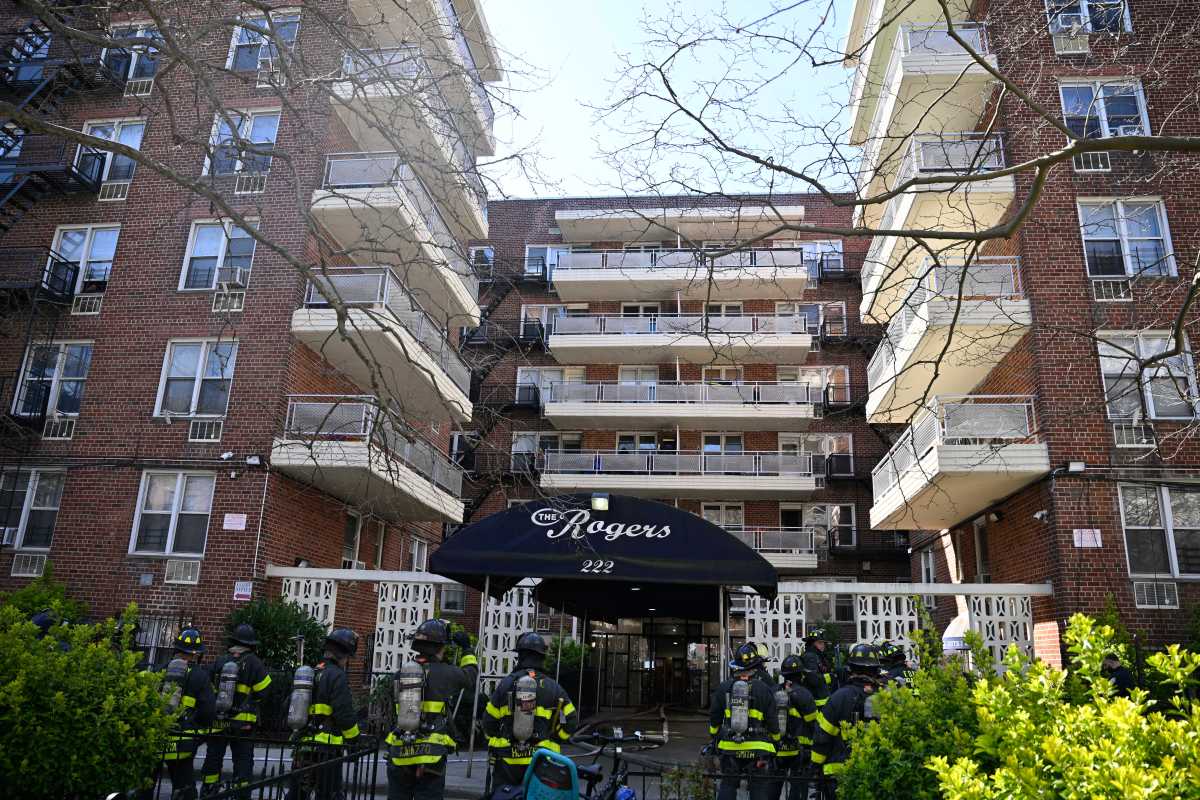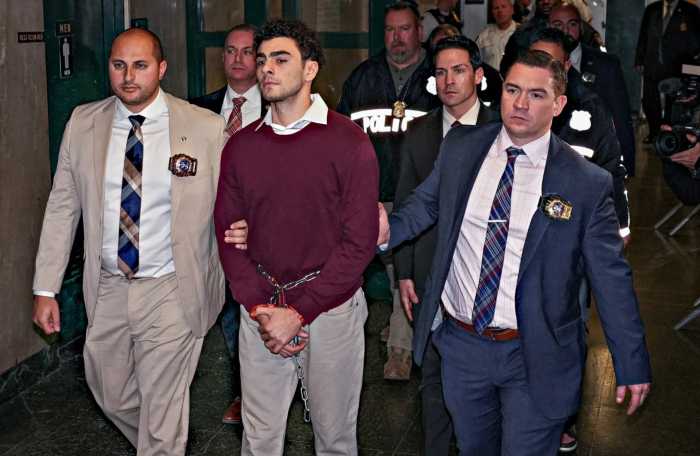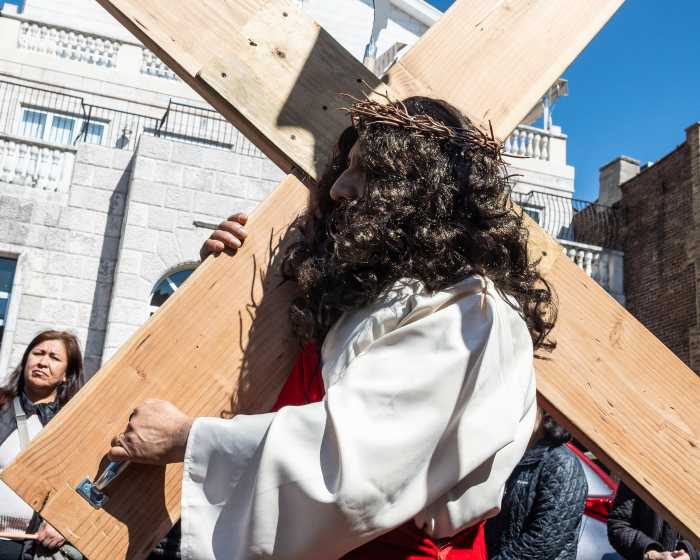
Has New York City been Kondo’d?
Thrift stores are inundated with donations. Clothing recycling at greenmarkets is on the rise. First-timers are discovering the joy of selling their wares to secondhand shops.
It’s hard to say with certainty just how many donors have been directly influenced by the new and addictive Netflix show “Tidying up with Marie Kondo,” featuring the beloved guru of decluttering. But one thing is for sure: Shantell Dukes is seeing people pull up to Out of the Closet’s Brooklyn thrift store with trailers full of clothing, books and other items.
“They have been coming in left and right because of [Kondo’s] show,” Dukes said. “People used to come in with a bag or two but now they are pulling up with U-hauls.”
The popular thrift shop, which benefits the AIDS Healthcare Foundation, was even forced to turn away donations this past weekend because the small staff was overwhelmed.
“We needed time to sort through everything and get it out,” Dukes said. “Now we have space.”
Housing Works has also noted an increase in donations to its thrift stores, which help fund its mission to help people with HIV/AIDS. Several customers told store employees they were inspired by Kondo.
At Buffalo Exchange in Astoria, where people can sell their clothes and footwear for cash or store credit, staffers have noticed a lot of new faces at the counter.
“We definitely have seen a huge increase in intake,” said Alyssa Montalbano, associate store manager. “There are a lot of new sellers.”
Kondo gained fame as a professional organizer in Japan and made a big splash overseas when her book “The Life- Changing Magic of Tidying Up,” was released in the U.S. in 2014. More than 5 million copies have been sold across the globe.
The Netflix show premiered on New Year’s Day and brought her a whole new legion of fans who find joy in watching the petite, smiling Kondo lead hapless American families to a clutter-free life.
Since then, her books have shot back to the top of bestseller lists. Unlike other reality shows about disorganized and hoarded homes, Kondo’s has a positive, judgment-free vibe.
Her KonMari method requires people to gather together all of their belongings, one category at a time, and toss or donate anything that does not “spark joy.”
“I actually did that, I piled all of my clothes on my bed,” said Anna Gonick, 31, of Sunnyside as she stood at the counter at Buffalo Exchange with bags of items she hopes to sell. “Some of this is the result of that.”

Gonick said it’s not hard for her to toss clutter and she even tried the KonMari system of folding clothes in a certain way.
“I think it’s good to have a technique,” she said. “For me it’s also been helpful to think about what you buy.”
Matthew Alvo, a self-admitted “clotheshorse,” said he had yet to see the show but appreciated its anti-clutter message.
“I try to edit my wardrobe as often as possible,” said Alvo, 31 of Astoria, who brought some of his clothes to Buffalo Exchange. “I’m always buying new stuff and I have to try to balance bringing new stuff in.”
Some people are happy to bag up their clothes and shoes and dispose of them quickly but in an environmentally-friendly way. That’s where Wearable Collections steps in.
The company collects unwanted clothing at GrowNYC’s greenmarkets across the city as well as from bins inside apartment buildings.
“I definitely think there’s this Kondo effect, there’s something going on,” said Adam Baruchowitz, founder and CEO of Wearable Collections. “I don’t normally see after holiday purging. January and February are usually slow months but we are filling trucks quickly on my building routes and at the greenmarkets.”
Kondo’s methods sparked some controversy in the professional organizing community, who don’t believe in a “one size fits all” method.
Sharon Lowenheim, a certified professional organizer based in Manhattan, said New York City dwellings can be especially challenging places to corral clutter.
“So many people are renters, you can’t always make modifications to your space,” said Lowenheim, who is also known as the Organizing Goddess. “People need to be creative about the use of their space.”
She also has an organizing principle similar to Kondo’s.
“I tell people use it, love it or lose it,” said Lowenheim.
On her show, Kondo typically gives a family some instruction but then allows them to do the sorting on their own.
Lowenheim said most of her clients need more support.
“They sit down and they get bogged down going down memory lane,” she said. “A professional will keep it moving. A wise colleague of mine once said that clutter is postponed decisions. I’m helping them with the decision making.”


































